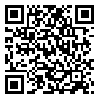Volume 9, Issue 1 (Journal OF Welding Science and Technology 2023)
JWSTI 2023, 9(1): 39-57 |
Back to browse issues page
1- Department of Metallurgy and Materials Engineering, College of Engineering, University of Tehran, Tehran, Iran.
2- Department of Metallurgy and Materials Engineering, College of Engineering, University of Tehran, Tehran, Iran. , m.khorrami@ut.ac.ir
2- Department of Metallurgy and Materials Engineering, College of Engineering, University of Tehran, Tehran, Iran. , m.khorrami@ut.ac.ir
Abstract: (1149 Views)
As one of the important pillars of the fourth industrial revolution, metal additive manufacturing (AM) technologies provide a disruptive approach to digital manufacturing. Laser powder bed fusion (LPBF), as one of these technologies, has great potential in producing geometrically complex and high-performance parts. In recent years, the manufacturing of aluminum alloy parts using this technology has attracted much attention. However, their manufacturing still faces some challenging issues. One of the most serious issues encountered in the manufacturing of aluminum alloys, especially high-strength grades, is solidification cracking. In the present investigation, the formation mechanisms of solidification cracking, and the associated effective factors were reviewed. Controlling the solidification microstructure and grain refinement, using the addition of small quantities (<1 wt.%) of micro- or nano-sized particles to the initial alloying powder, was suggested as the most effective method for reducing solidification cracking. These particles act as nucleation sites, prevent grain growth, pin grain boundaries, and with the help of factors that provide constitutional supercooling can effectively minimize solidification cracking. Eventually, effects of various additives in grain refinement and their associated mechanism in reduction of solidification cracks of high-strength aluminum alloys by LPBF is presented.
Keywords: Additive Manufacturing, Laser Powder Bed Fusion, Aluminum, Solidification Cracks, Grain Refinement.
| Rights and permissions | |
 |
This work is licensed under a Creative Commons Attribution-NonCommercial 4.0 International License. |



